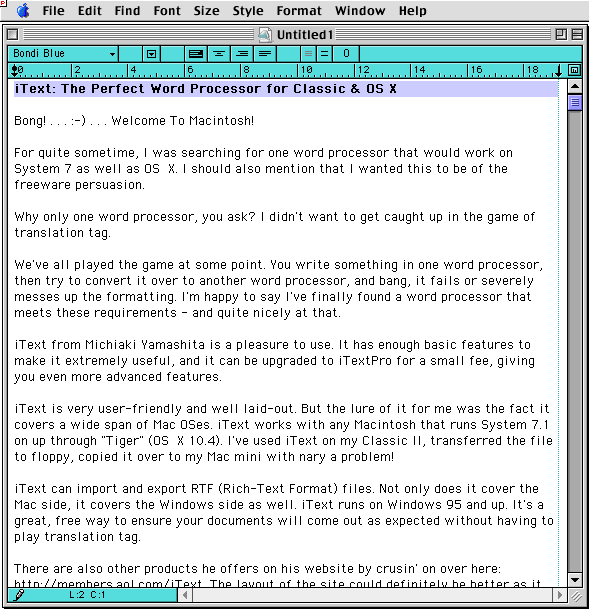
- #What do you use for word processing on a mac for free
- #What do you use for word processing on a mac mac
#What do you use for word processing on a mac for free
Pages automatically saves your changes, so you won’t lose any of your work.Can I Download Microsoft Word For Free On Mac? To close the document when you’re finished working, click the red close button in the top-left corner of the window. If iCloud Drive is set up on your Mac, Pages saves your document there by default. To name your document and choose where to save it, choose File > Save, enter a name, choose a location, then click Save. Undo or redo recent changes: Choose Edit > Undo or Edit > Redo (from the Edit menu at the top of your screen). (You can also use this method to manually add a page to a word-processing document.) See Add, delete, and rearrange pages. In a page layout document, you need to add a blank page manually-click the page that you want the new page to follow, then click the Add Page button in the toolbar.
#What do you use for word processing on a mac mac
Replace placeholder images: Click in the lower-right corner of a placeholder image to choose an image on your computer, or drag an image from your Mac or a webpage to a placeholder image.Īdd a page: In a word-processing document, a new page is automatically added as your typing reaches the end of a page. Some templates include placeholder text written in lorem ipsum (scrambled Latin), but the text you type to replace it appears in the language you use.Īdd new text boxes, images, shapes, or other objects: Click an object button in the toolbar. Replace placeholder text: Click the placeholder text, then type your own.

To format the selected text, use the controls in the Format sidebar on the right. To edit text, select the text, then type. In a page layout document, add a text box (see below), then type. The blinking insertion point indicates where your text starts. If not, it’s a page layout document.Īdd or edit text: In a word-processing document, just begin typing. If there’s a Bookmarks tab at the top of the sidebar, it’s a word-processing document. To see whether the template is designed for word processing or page layout, click in the toolbar. In the template chooser, browse templates by category or click All Templates, then double-click a template to open it. See Change a document’s language and formatting. Note: If you’d like the ability to format table and chart data using the conventions of another language, choose the language in the bottom-left corner before choosing a template. In the dialog that appears, type a title in the Save As field, choose where you want to save it, then click Save.įor introductory information about choosing templates, adding images and other objects, and adding pages, see Create and format a document, below.

To save your document, choose File > Save. If a clipping indicator appears at the bottom, drag it until all of the text is visible. Drag a handle on the top, bottom, or sides to resize the text box horizontally or vertically, or drag a corner handle to resize it proportionally. Resize it: Click outside the text box to deselect the text, then click the text box to show the square resize handles. Move it: Click outside the text box to deselect the text, then drag the text box anywhere on the page. You can use this method to convert any word-processing template to a page layout template.Ĭlick Text in the toolbar to add a text box, then start typing.ĭo any of the following to adjust the text box:

If the template chooser doesn’t appear, click New Document in the bottom-left corner of the dialog.ĭouble-click one of the blank templates in the Basic category.Ĭlick in the toolbar to open the document formatting controls.ĭeselect the Document Body checkbox, then click Convert in the dialog. To open Pages, click the Pages icon in the Dock, Launchpad, or Application folder.


 0 kommentar(er)
0 kommentar(er)
